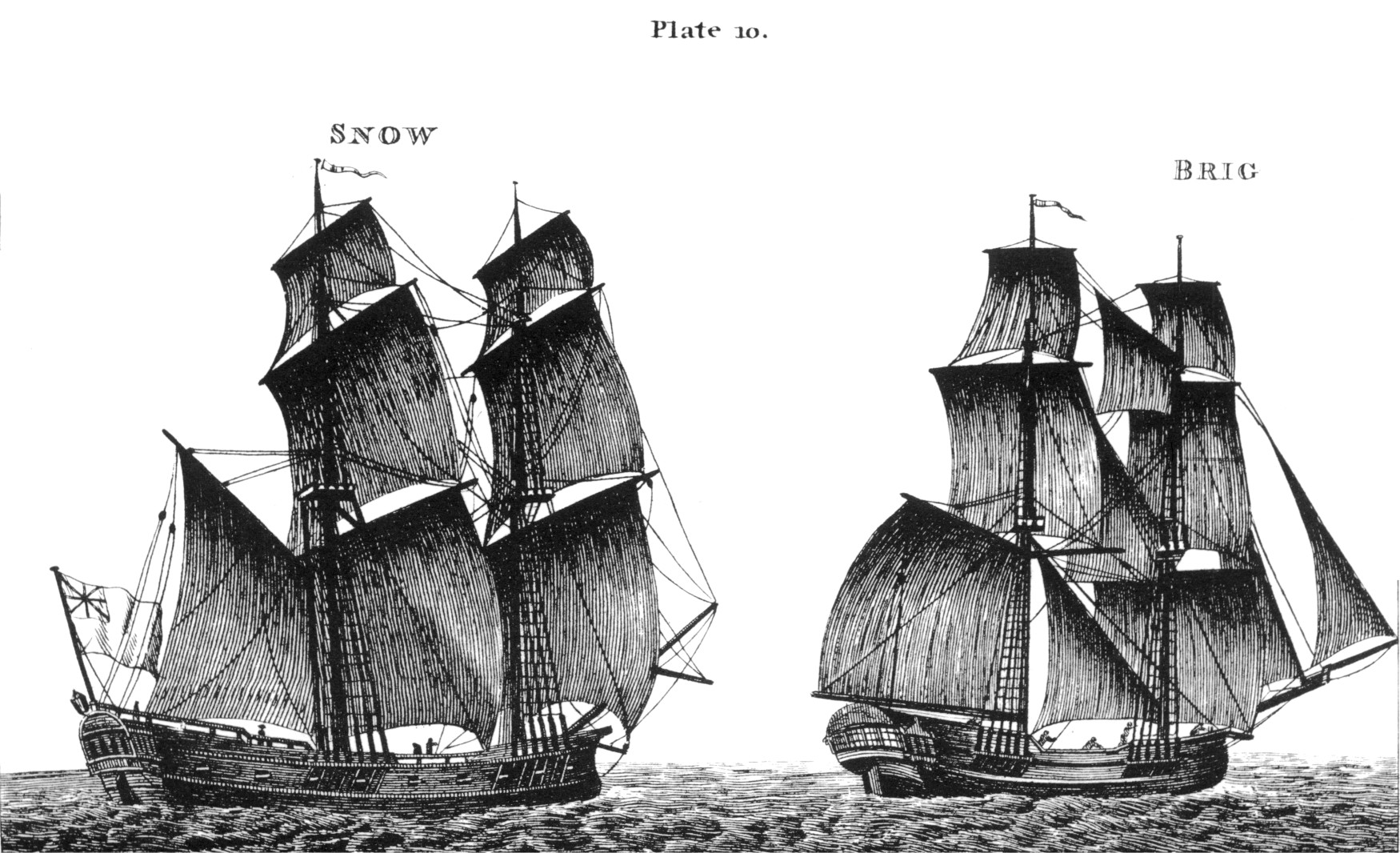The Snow and the Brig – differences.

The drawing reproduced here (click to enlarge) is by David Steel and can be found in his Steel's Art of Rigging 1818 (London, 3rd edition). Note that while this represented the "state of the art" circa 1800, as the century progressed the trysail was most often set on a boom, thus ressembling a mizzen (or spanker – this was new terminolgy, first used just before 1800); also, given that there was no interference with the main-yard or with any hoops or fittings on the mainmast the gaff throat was hoisted higher, approaching the masthead.
The origins of the snow are normally considered to be from the (three-masted) ship, with the mizzen getting closer and closer to the main-mast (the brig developed later, as a development of the brigantine). As to terminolgy, the classic trysail mizzen led to the early use of "trysail-mast" when very close to the main-mast, later replaced by "snow-mast", even when in the last days of the snow, the mast was replaced by a vertical wire stay suitably close to the main-mast.
Perhaps the most significant difference is that the snow normally carried a main course, rather than the main staysail of the brig, thus increasing her light air sailing performance. Note that a few brigs, notably the French langards did carry a main course.
The text below is also from Steel as referenced above.
Rigging vessels with two masts
A SNOW (See Pl 10.) is the largest two-masted vessel and is extremely convenient for navigation.
The sails and rigging on the main and fore mast are similar to those on the same masts in a ship, the braces of the sails on the main-mast leading forward: besides which, there is a small mast, close behind the main-mast, that carries a trysail, resembling the mizen of a ship. This mast, called the trysail-mast, is fixed in a step of wood upon deck, and the head fixed by an iron clamp to the aft-side of a chock in the trestle-trees.
Vessels in the navy, that resemble snows, have a rope-horse, that sets up abaft the main-mast with dead~eyes and a laniard, to which the trysail is bent, by hanks, and seizings, similar to the trysail of a snow.
An HERMAPHRODITE is a vessel so constructed as to be, occasionally, a snow, and sometimes a brig. It has therefore two main-sails; a boom main-sail when a brig, and a square main-sail when a snow; and a main-topsail larger than the fore-topsail.
Sometimes the boom main-sail is bent to the main-mast, as a brig; or on a trysail-mast as a snow.
Rigging a BRIG.
The rigging of a brig is little different from the fore and main-masts of a ship, the braces of the sails on the main-mast leading forward. The after-main shroud must be served from the mast-head to the dead-eye, to prevent its being chafed by the main-boom and gaff. The after-backstay is fitted with a tackle, that it may he slackened when the main-sail jibes, or is bowsed forward by the boom-pendent and tackle. They carry no main-yard, but a cross-jack yard.
